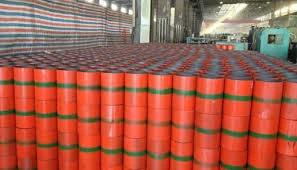Understanding Bull Plug Pipe Fittings and Their Applications in Various Plumbing Systems
Understanding Bull Plug Pipe Fittings Essential Components in Fluid Systems
Bull plug pipe fittings are integral components used in various fluid transfer systems. These fittings are designed to seal the end of a pipe, effectively blocking any fluid passage. They come in handy in numerous applications, ensuring that systems operate efficiently and safely.
What is a Bull Plug?
A bull plug is a type of pipe fitting commonly made from materials like steel, plastic, or brass, depending on the requirements of the application. Its primary function is to serve as a closure for the ends of pipes, preventing leaks and ensuring that materials within the system remain contained. The term bull plug is often derived from its robust design, indicating a strong and reliable means of sealing.
Types of Bull Plugs
Various types of bull plugs are available, each suited for different applications. The most common types include
1. Threaded Bull Plugs These plugs feature external threads that allow for easy installation into a corresponding threaded pipe. They are particularly useful in applications where regular access to the closed pipe is required, as they can be easily removed and reinstalled.
2. Welded Bull Plugs For applications requiring a permanent seal, welded bull plugs are often preferable. These plugs are welded directly onto the pipe, providing a leak-proof and durable closure. They are commonly used in high-pressure systems where there's a need for enhanced strength and reliability.
3. Flanged Bull Plugs Used in systems where quick disassembly is necessary, flanged bull plugs have a flat surface with holes that allow for bolting onto the pipe’s flange. This design not only provides a strong seal but also facilitates easy maintenance.
Applications of Bull Plugs
The applications of bull plugs are widespread across various industries. They are commonly found in
bull plug pipe fitting

- Water and Wastewater Processing In water treatment facilities, bull plugs are used to close off pipelines, allowing operators to perform maintenance without completely draining the system
.- Oil and Gas In the oil and gas industry, these fittings are crucial for sealing pipelines and ensuring the safe transport of crude oil and natural gas. Bull plugs help prevent leaks, which could be dangerous and costly.
- Manufacturing In manufacturing settings, bull plugs are used in hydraulic and pneumatic systems to block off unused ports or to temporarily seal components during maintenance.
Benefits of Using Bull Plugs
Utilizing bull plugs in a piping system offers several advantages
- Leak Prevention By providing a tight seal, bull plugs help prevent unwanted leaks, which could lead to environmental contamination and loss of materials.
- System Integrity They contribute to the overall integrity of the piping system, ensuring it operates effectively under pressure without compromise.
- Ease of Maintenance With the ability to easily seal and unseal areas of the system, bull plugs simplify maintenance tasks, thereby reducing downtime and costs.
Conclusion
In conclusion, bull plug pipe fittings play a vital role in the functionality and safety of fluid systems across different industries. Their robust design and versatile applications make them indispensable for ensuring leak-free operations and facilitating maintenance. As technology advances and systems become more complex, the importance of reliable components like bull plugs will only continue to grow. Understanding these fittings can help engineers and operators make informed decisions about their use, ultimately contributing to the success of their projects.
-
Unlock the Benefits of Pup Joints for Your OperationsNewsOct.31,2024
-
The Quality of Casing Couplings from ChinaNewsOct.31,2024
-
The Essential Role of Pup Joints in Drilling OperationsNewsOct.31,2024
-
The Benefits of Tubing Couplings for Your ProjectsNewsOct.31,2024
-
Enhance Your Drilling Operations with Tubing Pup JointsNewsOct.31,2024
-
Elevate Your Drilling Operations with Tubing CrossoversNewsOct.31,2024







